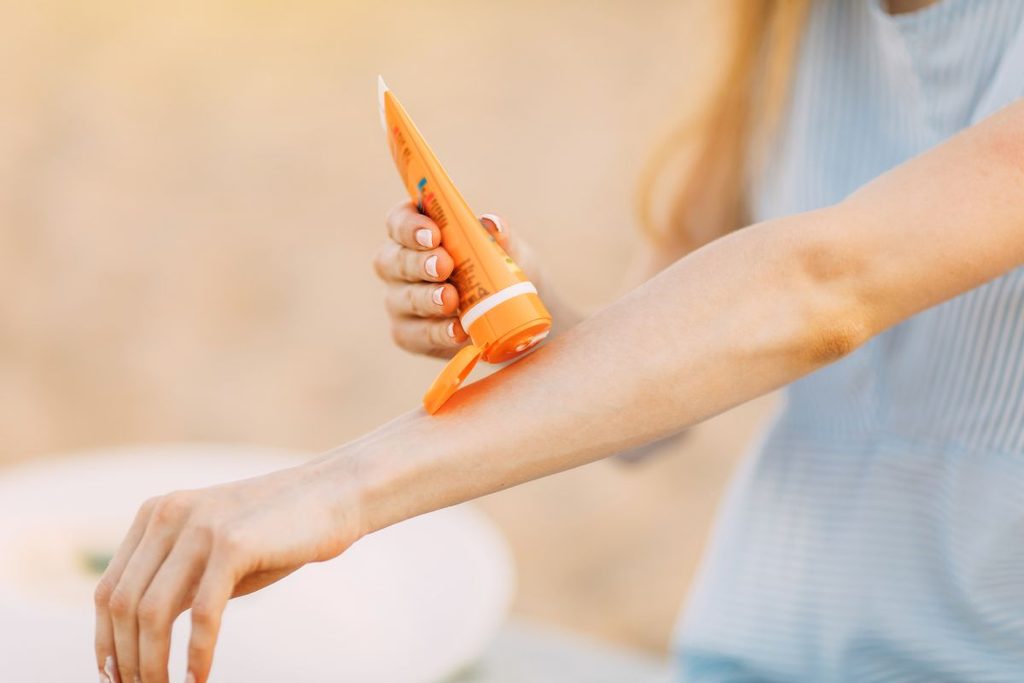
4 facts you need to know about sunscreen
Whether you’re planning a vacation to get away from the cold winter weather or you’re simply counting down the days until summer, there’s probably one main thing on your mind – that being sunshine. Achieving the perfect bronze complexion while laying out in the sun may be important to you, however, it’s crucial to take proper safety precautions. In other words, you shouldn’t skimp on the sunscreen. According to the American Academy of Dermatology, it’s estimated that one in five Americans will develop skin cancer during their life. By wearing sunscreen, you can prevent sunburn, early signs of aging and even reduce your chances of developing skin cancer.
Whether you’re going to be soaking up the sun on the beach in the near future or you’re merely waiting for July to get here, it’s important to be conscious of the dangers of UV rays and why you should be wearing sunscreen. Here are a few facts you should know about sun protection.
1. What is SPF anyway?
You know your sunscreen should contain a certain level of SPF, but do you even know what that means? The Skin Cancer Foundation defines SPF – Sun Protection Factor – as the sunscreen’s ability to prevent skin damage caused by the sun’s UVB – Ultra Violet B – rays. If you’re using at least SPF 15, your skin should be well-protected. SPF 15 blocks out about 93 percent of UVB rays, SPF 30 blocks 97 percent and SPF 50 blocks nearly 98 percent. While those numbers may seem rather close to one another, they can really make a difference, especially if you have sensitive skin or there’s a history of skin cancer in your family.

2. It should be worn year-round
Contrary to popular belief, you shouldn’t only be wearing sunscreen during the summer. You should be wearing it any day you’re going to be spending time outdoors, even during the winter. Harmful UV rays are given off by the sun year-round, according to the source. The need for sunscreen is increased when you’re around snow, sand and water because they reflect the light from the sun’s rays. Consider using a daily moisturizer with SPF or simply applying sunscreen year-round for total UV protection.
3. Everyone needs to wear it
Every person over the age of six months should be using sunscreen every day, according to the Skin Cancer Foundation. Even if you’re working inside, you should still be wearing the stuff – you’re going to be exposed to ultra violet radiation at some point during the day, especially if you’re working near windows.
“Every skin type can be damaged by sun exposure.”
It’s extremely important to wear sunscreen regardless of your race, skin type and ethnic origin. Every skin type can be damaged by sun exposure. Even if your skin normally doesn’t burn and you tan easily, you should still be wearing sunscreen.
4. There’s a difference in sunscreen and sunblock
Don’t be fooled by the similarity in names – sunscreen and sunblock are two different things. According to the Melanoma Foundation, sunscreen is classified into two major types – chemical and physical. Chemical sunscreens are often colorless and contain chemicals that absorb UVB and UVA rays. Physical sunscreen, also known as sunblock, contains ingredients such as titanium dioxide and zinc oxide which block ultra violet radiation. While sunblocks provide protection against UVB and UVA rays, they are the messier choice – they are often extremely visible and don’t wash off easily.